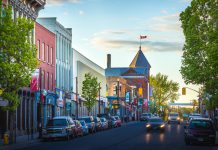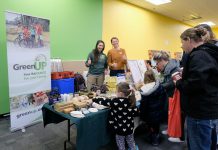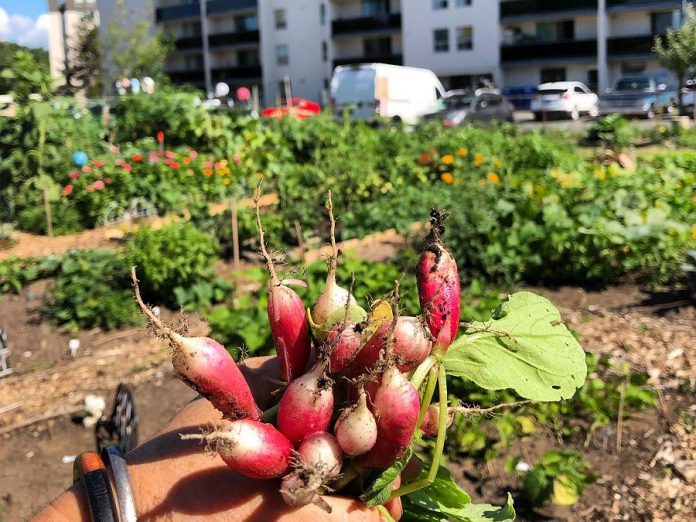
September is Local Food Month in Peterborough. Peak harvest season provides us with an opportunity to highlight the vital importance of Peterborough-area food and farms in our local culture and economy.
We are lucky to live in a region rich in local food sources. Not only are we surrounded by rich farmland, fresh water, and lush forests, but we are also surrounded by knowledgeable and hard-working growers, farmers, foragers, and stewards of the land. These people can help us access this bounty of fresh food as it comes into peak harvest season. We depend on these stewards and their care of the land for our food and future.
Local food comes in many forms: a carrot picked proudly from a community garden, a bushel of paste tomatoes from a farmers’ marketm corn from a favourite farm stand just in time for dinnerm wild rice harvested from a local lakem meats lovingly raised by local farmers, as well as cheese, milk, and other dairy products stocking grocery store shelves with a “Made with Ontario” sticker. These and so many other delicious options can be found across Peterborough and the Kawarthas.
September is an excellent time to buy local, to support farmers, and to engage in our food systems. This concept of eating locally seems more important than ever as we look to recover from the COVID-19 pandemic. This September, let’s buy local and support our local farms, and work together to increase sustainability and equity in all aspects of our food systems.
Buying local builds local business. Shopping locally means putting money back into the local economy, where it can circulate to support multiple small businesses and create new jobs.
Buying local also means you are eating what is fresh and most in season. This reduces food miles, as food does not need to be shipped long distances to get to your plate.
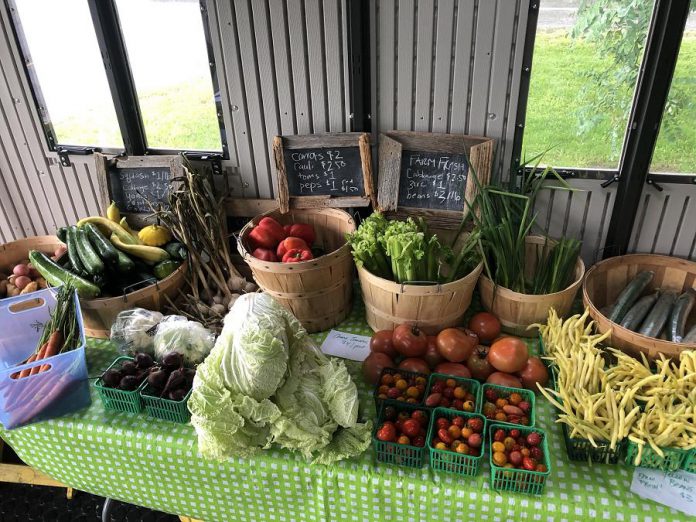
Finally, buying local helps support farmers and producers who are contributing to the health of our ecosystems overall. If each person living in the Kawarthas spent just $5 per week on local food, this would contribute $55 million to our local economy annually.
When looking to determine what is local, it is best to shop directly from farmers via farm stands, farmers’ markets, or by purchasing a Community Shared Agriculture (CSA) share directly, or through grocers and shops that showcase where they source their products from.
Despite such local bounty, not everyone in this region has equal access to local food systems. For our local food to thrive sustainably, equity must be part of the conversation.
Peterborough has great resources to learn more about the many components of our food system.
For a wide range of information about food in our community, visit Local Food Peterborough at localfoodptbo.ca. This website contains information about finding local food, what’s in season, starting a farm, and much more. The site contains links to over 20 videos showcasing local farms in our region.
Want to learn more about growing your own food, joining or starting a community garden, cooking, and preserving fresh local food, and advocating for fair and just food system? Check out the Nourish Project at nourishproject.ca.
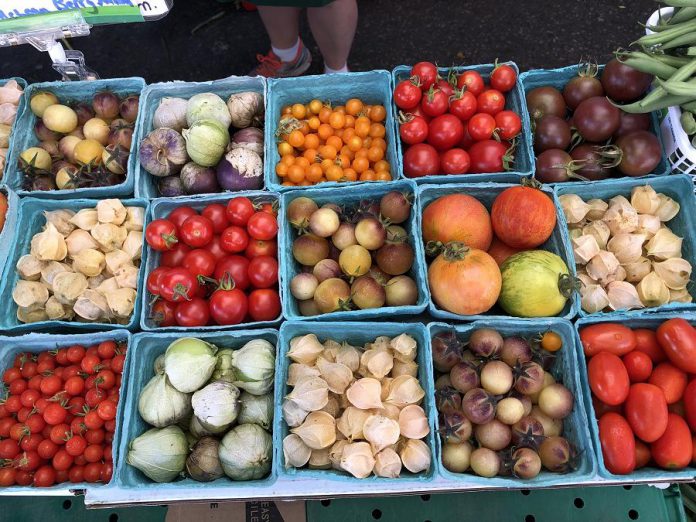
Our food system is complex, and farmers come in many forms. If you eat fresh local food, migrant farmers likely played a critical role in getting that food on your plate. Every year, Ontario welcomes over 25,000 temporary foreign workers, who harvest or are otherwise involved in food production, particularly fruits and vegetables. Ontario brings the highest number of migrants workers in Canada.
For many migrant farmers, their jobs and rights hinge on the farms that employ them. Many farm labourers come to Canada through the federal government’s Seasonal Agricultural Workers Program. Through this program, migrant farmers are issued work permits to fill vacant positions at a specific farm for a specific length of time. As citizens, it is important that we are aware of this issue and advocate for all farmers to be respected and treated fairly.
To ensure that our food systems are sustainable and secure, workers’ rights must be central. The New Canadians Centre in Peterborough recently released a five-minute film (below) showcasing the story of one local farmer who comes to Circle Organic each season from Mexico.
This harvest, let’s consider the many aspects about what makes our local food systems truly sustainable. Let’s not only think about how we spend our food dollars and how those decisions can positively impact our community and environment. Let’s also think about how we can work together to ensure that all farmers are respected for the critical work they do, that the land we grow upon is protected, and that all members of our community have equal access to the bounty that surrounds us.
Access to fresh, healthy, and culturally appropriate foods is not equal for far too many Canadians. For many people food insecurity is not simply a matter of having enough food available, but having the available income to purchase this food.
Food banks, emergency food, and reclaiming wasted food are not viable long-term solutions. To ensure all members of our communities have equal access to fresh foods, we need to advocate for universal basic income.
VIDEO: The Hands That Feed Us – New Canadians Centre
With an election looming, we can do more than just shop local to support our local food systems. Let’s ask candidates these questions:
- How will you support all local farmers and food systems?
- How will you ensure that all Canadians have access to fresh, locally produced, and culturally appropriate foods?
- How will you support Indigenous communities in ensuring they have sovereign access to their traditional foods?
- How will you reduce climate chaos by protecting farmland, rewarding farms and farmers who contribute to a reduction in greenhouse gases, and protecting precious resources such as water and soil?
- How will you ensure that all community members earn enough to purchase the fresh food that is available in our region?
Let’s put local food on the election menu.
















